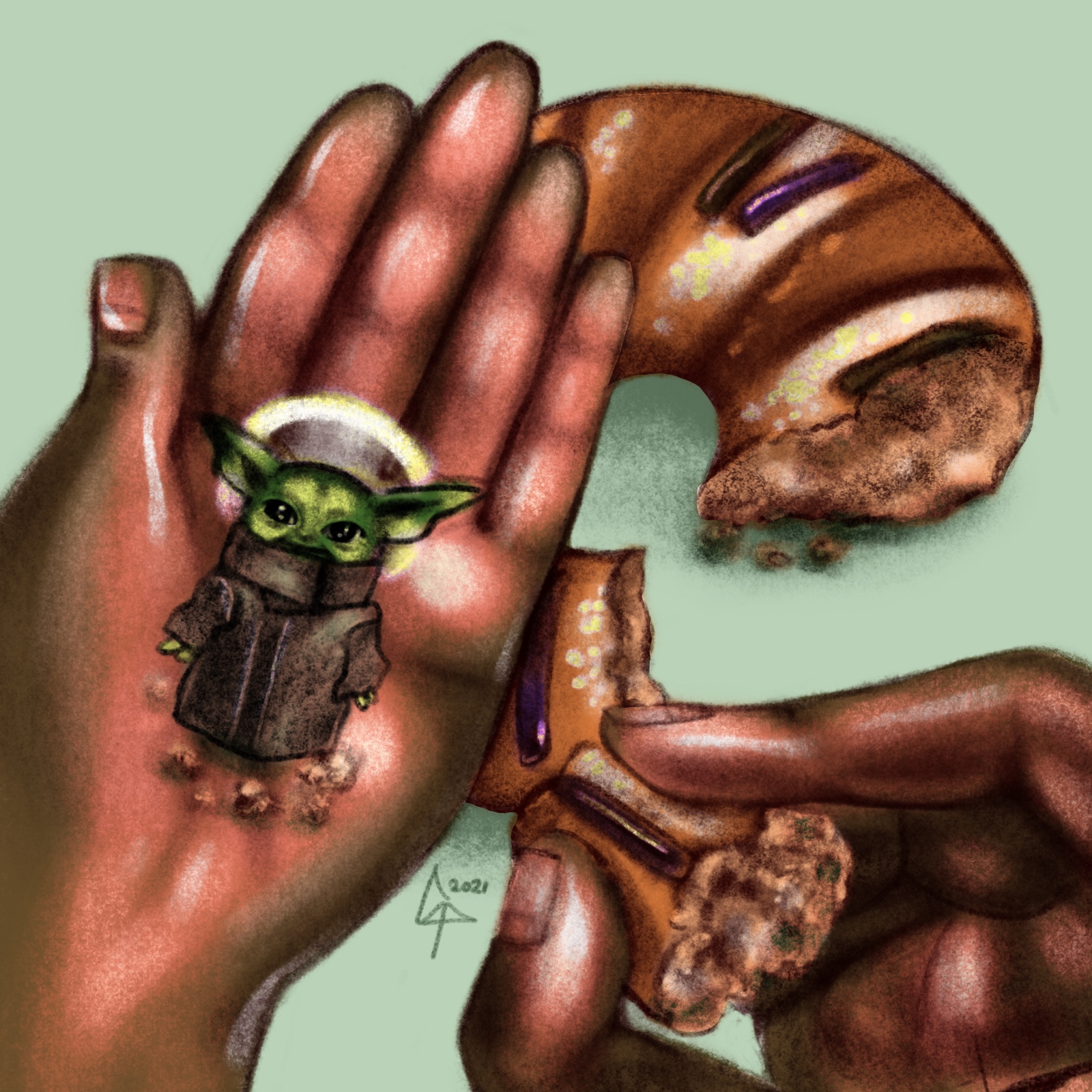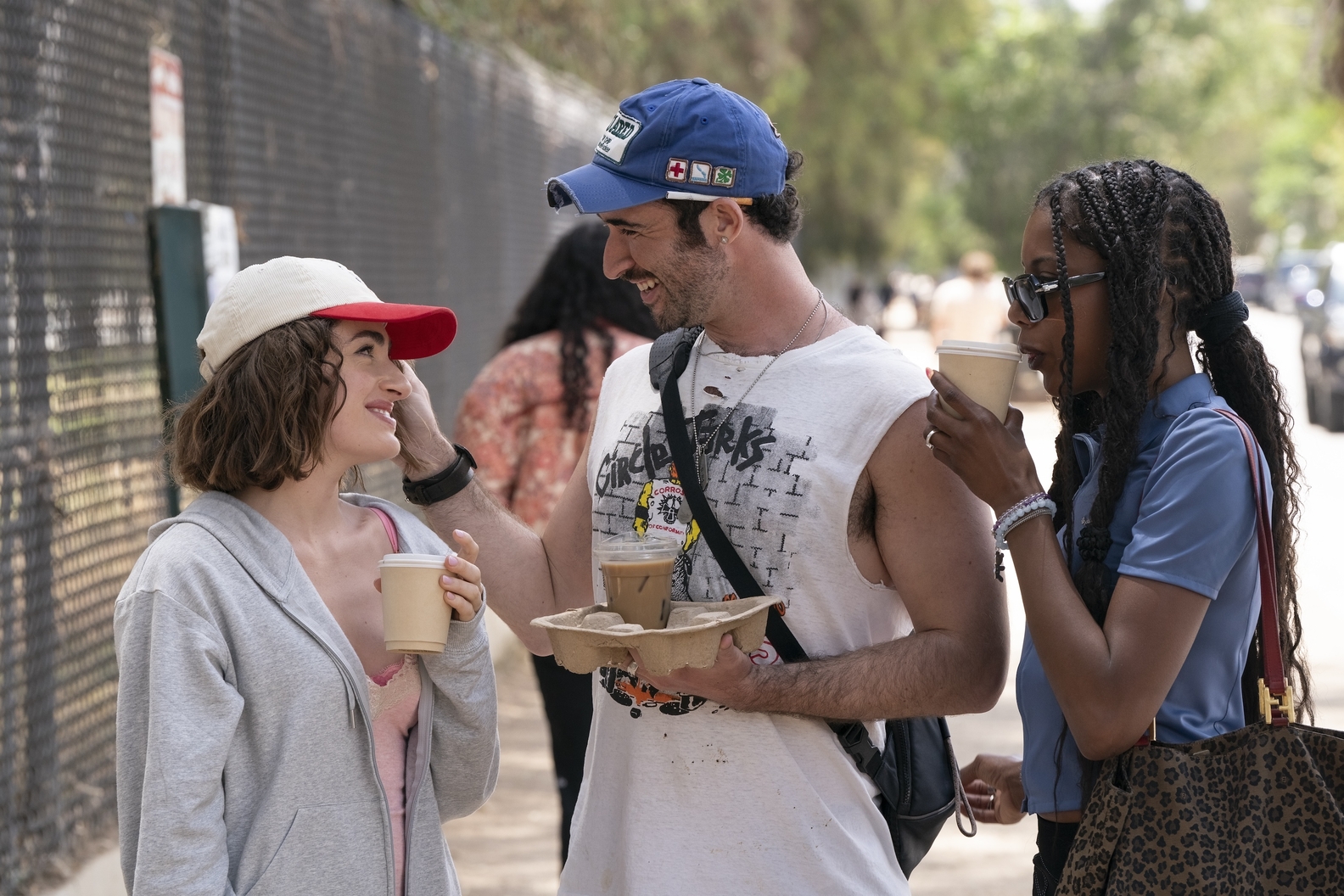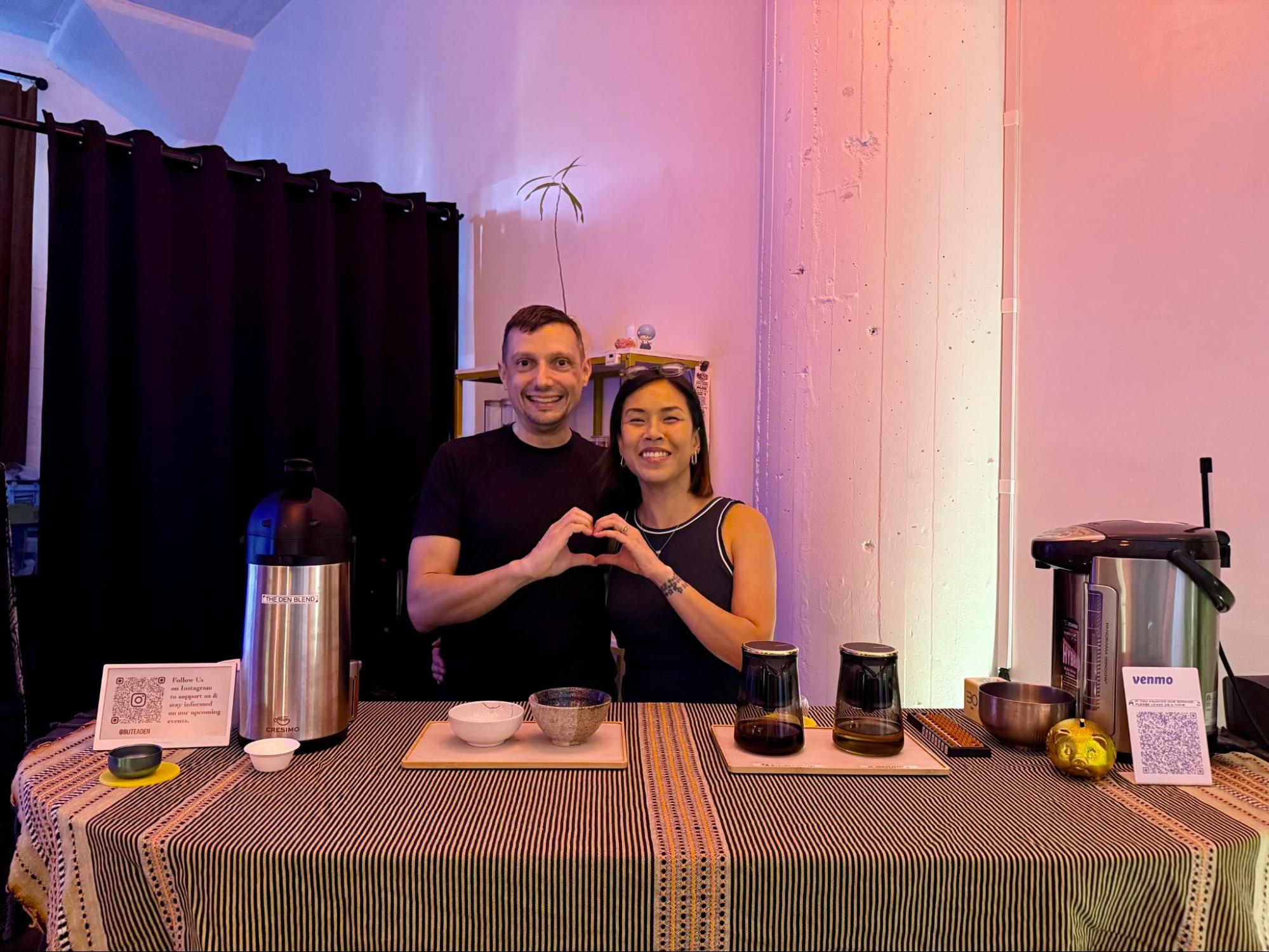[dropcap size=big]W[/dropcap]ith Three Kings’ Day upon us, fans of Rosca de Reyes may once again be asking themselves a critical question: Why does this beloved Catholic pan dulce get so damn dry so damn fast?
Rosca de Reyes tends to be tender enough on day one but the sweet bread petrifies at a startling rate. Several days in, one can’t cut it. One needs a mallet to smash it apart as it no longer sheds its soft crumbs, but releases croutons that could be used as shivs.
My tío Alvaro, a Rosca de Reyes fanatic, refused to throw the pastry away even after it had turned to stone. Like a sculptor with a piece of marble, Alvaro would slam it against the kitchen counter to break off a hunk then revive his shard by dunking it in milk, turning it into a single-leche pastel of sorts.
To prevent ossification, some innovators stuff the cake with cream the way others smear bagels con queso crema, as happens with the variety known as Rosca’s Cajun “King’s Cake” primo, which is packed with cream cheese and brown sugar. Frankly, I find Alvaro’s solution to be a more exciting life hack.
Rosca de Reyes pairs well with champurrado, coffee, and novocaine. Translated to English, it is the king’s ring and it's shaped and brightly bedazzled like one. Dried fruits adorn the carby “O,” representing the jewels that glittered along the three wise men’s crowns.
These biblical Magi trekked to Bethlehem to congratulate Mary and Joseph on being the newborn Christ child’s earthly mom and dad, and they brought baby Jesus gifts—gold, frankincense, and myrrh—to welcome him to this weird planet.
Catholics celebrate the Magi’s arrival on January 6th, known as "the Epiphany," and Rosca de Reyes is a bready dessert eaten on this feast day, during which many also receive gifts.
Rosca de Reyes tends to be tender enough on day one but the sweet bread petrifies at a startling rate.
The circular shape of Rosca de Reyes signifies God's infinite love and much like the rite of holy communion, eating the pastry represents communion with Christ. During my Catholic childhood, I took the religion's cannibalistic metaphors seriously. I believed what the bewhiskered monjitas taught me in catechism class, that my classmates and I were being prepared to receive the body and blood of a long-haired man born in a manger. The nuns, though, left us ill-prepared for the flavors of this rite.
On the day that I first received the Eucharist, an Irish priest placed a pale wafer on my tongue. It tasted like cereal, not at all meaty as I’d imagined it would.
“If I’m eating a person,” I thought to myself, “Shouldn’t the wafer taste like one?” I felt disappointed. We had tortillas at home.
Rosca de Reyes takes this eating of Jesus to whole other level, sometimes forcing dentists to get involved.
Inspired by the Biblical story of Mary and Joseph’s struggle to hide and protect their infant son from King Herod, an effigy of baby Jesus is baked into Rosca de Reyes. His location is shrouded by dough and nobody knows what bite he lurks in. Discovering the baby in one’s slice indicates good luck and future prosperity.
It also blesses the finder with the privilege of hosting a big tamal party on February 2nd, known as Candlemas. Not everyone embraces this blessing.
In the case of an empty pan dulce, it’s wise to keep an eye on the toilet. One’s blessing might reveal itself there.
I once heard of an Angeleno who was so cheap he pretended he hadn’t found Jesus. He didn’t want to spend a dime of his own money feeding his family tamales.
There’s also the problem of Rosca de Reyeses getting pregnant with twins and on extreme occasions, triplets. If you find Jesus in your slice, and I find Jesus in mine, which one is the true Christ? How does one sort out the imposter from the messiah’s legitimate representative? Rock-paper-scissors is one approach.
Baby Jesus can also present orthodontic challenges. Teeth can break as a result of drunkenly biting down on him and then there’s the problem of a barren Rosca. In the case of an empty pan dulce, it’s wise to keep an eye on the toilet. One’s blessing might reveal itself there.
When my dad, Bob, orders Rosca de Reyes from the panadería, he firmly communicates that he prefers it be nut—as opposed to fruit—heavy. My mother is impartial. Beatriz is a fruitcake fanatic and she’s the only person whose eyes I’ve seen twinkle upon receipt of one of those formaldehyde-soaked loaves. She pairs these desserts with eggnog or rompope, thus improving their flavor with liquor.
From Brazils’ Bolo Rei to England’s Twelfth Night Cake, Catholics partake in variations of Rosca de Reyes the world over. Different bakers bring regional and subcultural innovations, some using a bean, others a pea and, in the case of Stars Wars aficionados, baby Yoda as a stand-in for the Christ child.
Despite these differences, what celebrants share in common is that we enjoy Rosca de Reyes on the Epiphany, a feast day celebrated with good food and gifts. Some of us may get sentimental on this holiday, sensing that it’s the final hurrah of the yuletide season, until we remember next month’s Candlemas tamalada.
And so, the fun doesn’t end on January 6th. We have rapidly hardening pan dulce to figure out how to eat and socially-distanced tamaladas to plan.
After all, in 2021, tamales taste better when watching yourself eating them on a tiny square on Zoom.
This article was originally published in 2021.







